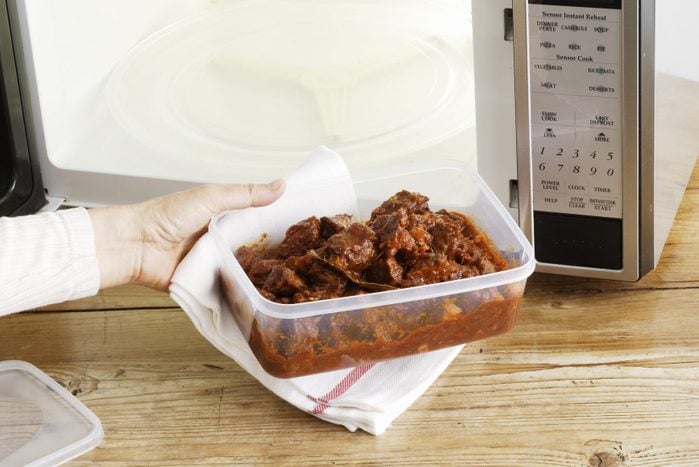Can You Put Plastic in the Microwave?
Updated: Jun. 06, 2022

You're ready to heat up your leftovers—but is it safe to microwave plastic containers? Here's everything you need to know before diving into your next meal.
It’s convenient, durable and everywhere—but can you put plastic in the microwave? While many of us might be tempted to zap food right in its storage container, when it comes to plastic, a little extra time and know-how can go a long way. (Learn more about whether you can microwave cardboard.)
So what does that mean the next time you want to heat up some leftovers?
How to Tell if Plastic Is Microwave Safe
Luckily, it’s easy to tell what kinds of plastic are relatively safe for the microwave. The first thing to do is check your container for a microwave-safe label. If you can’t find one, check the number on the container. All plastic products are labeled with a number from 1 to 7 for recycling purposes.
What is the safest plastic to microwave?
Plastic labeled with the number 5 is the safest to microwave—it is resistant to high heat and won’t warp. Microwave-safe plastic is also free of BPA, a chemical that can be harmful to our health. (More on this later.)
What plastics should not be microwaved?
Avoid plastic containers labeled 3, 6 or 7—these are never microwave safe. Single-use plastic is usually a no-go for the microwave, and most takeout containers fall into this category. And if the plastic isn’t labeled or the container has visible damage, it’s safest to skip the microwave in these cases, too.
Tips for Microwaving Plastic
Keep health concerns in mind
Why can’t you microwave just any old plastic container? As we mentioned before, plastic can contain BPA and phthalates, which help make it flexible and light, but can also be damaging to human health—they can disrupt our hormones and metabolism. When plastic is heated, it melts, allowing those chemicals to leach into the food.
Opt for plastic alternatives when covering
When looking for something to cover your food while reheating, bypass plastic wrap. Cover microwave-bound containers with parchment paper, a paper towel or a plate—even a microwave-safe paper plate. (Learn more about when you can put aluminum foil in the microwave.)
Ultimately, the best option is no plastic at all, because even the safest plastics can still leach chemicals when exposed to high enough heat, especially if heated many times. Put your food in a glass container or on a plate, and zap away!
Next Up: Here are things you shouldn’t put in the oven.



















